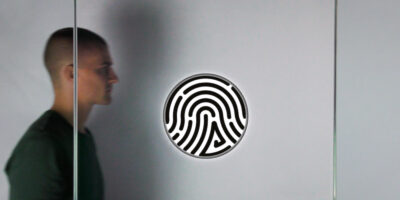Delivering power is transparently obvious with Zytronic’s ElectroglaZ
Power delivered invisibly through glass is possible with a patent-pending technology developed by Zytronic. ElectroglaZ opens up opportunities to wirelessly charge low power devices and applications.
ElectroglaZ is transparent and can be used to power a variety of low power, electronic and electrotechnical devices embedded within a glass panel, says Ian Crosby, sales and marketing director at Zytronic. “Potential applications include LED lit display cases and shelving units for museums, art galleries and high-end retail stores,” he added.
ElectroglaZ can also deliver low power, (i.e. less than 50V / 3A), to USB sockets, induction charging pads, motors, fans, security cameras and sensors, air monitoring units in HVAC systems, and small displays. It can be combined with Zytronic’s patented multi-touch projected capacitive technology (MPCT) technology to add multi-user touch interactivity and object recognition in tabletops and other ‘smart’ furniture. It can also be combined with Zytronic’s ZyBrid hover contactless sensing technology. This detects user interactions up to 30mm away from the surface of the glass, to offer further design and innovation possibilities for wireless charging.
ElectroglaZ technology consists of a bespoke lamination of two or more conductive, yet completely transparent, glass panels. Power is transferred across the inner conductive coatings within the insulated surfaces of the laminate. To access the power, small apertures, typically 30 to 100mm, are machined into the laminated glass. This is to accept the customer’s connection and electrical device or assembly which connects to the positive and negatively charged inner coatings. A 1.0mm wide printed conductive busbar around the perimeter of the glass is applied to supply the external power into the laminate.
According to Zytronic, the design options available are almost limitless. Initially, ElectroglaZ panels will be any size up to 1m x1.8m. The maximum number of mounting holes machined into the glass depends upon the size of both the panel and apertures. The company suggested a guide of a minimum distance of twice the aperture diameter between each hole, and also from the glass edges.
“We will closely consult with each customer depending upon their individual project requirements and product design and provide guidelines and recommendations on attaching electrical connections to the busbar and power delivery apertures,” says Dr Andrew Morrison, technical director, Zytronic. “The industrial design engineer would then take the final system assembly through any applicable electrical safety tests and certification as per usual.”
As all of Zytronic’s manufacturing processes are in-house, samples and prototypes of ElectroglaZ can be fabricated within a few days or weeks.




